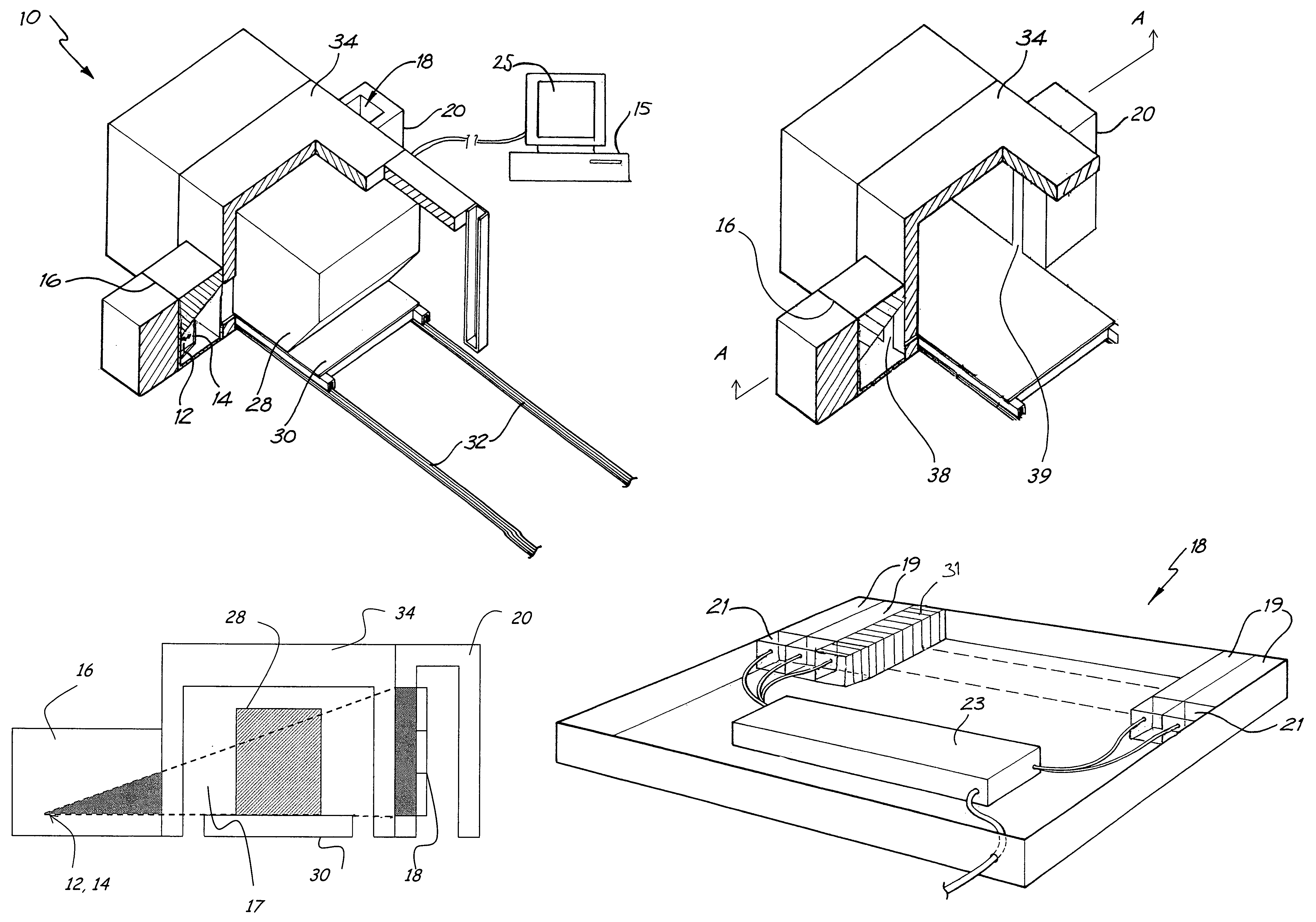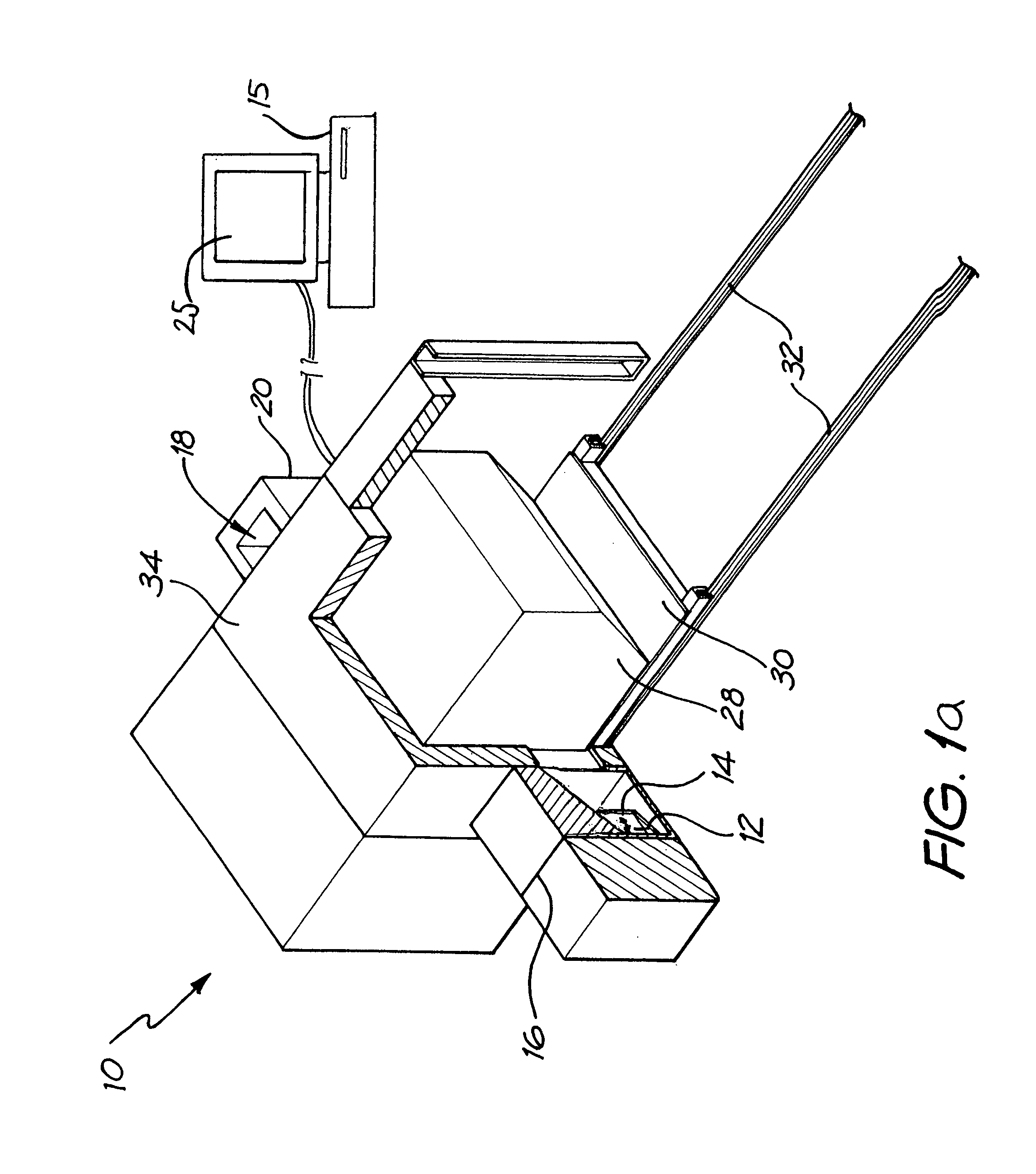Radiographic equipment
a technology of radiographic equipment and equipment, applied in the direction of material analysis using wave/particle radiation, instruments, greenhouse gas reduction, etc., can solve the problems of limited technique, inability to detect benign organic materials, and low discrimination power of x-rays, so as to enhance the capability of single energy transmission technique, improve the accuracy of information obtained, and minimise scattering
- Summary
- Abstract
- Description
- Claims
- Application Information
AI Technical Summary
Benefits of technology
Problems solved by technology
Method used
Image
Examples
second embodiment
[0108]A second embodiment applies directly to the dual energy fast neutron transmission embodiment for 14 MeV and 2.45 MeV. However the following discussion also applies to the dual energy transmission at different energies to 2.45 and 14 MeV. However unlike single energy neutron transmission discussed previously, three count rates are measured at each pixel rather than two in the case of single neutron transmission, and two-cross-section ratios can be calculated.
[0109]Suppose that the count rates in a particular pixel from each image are r14, r2,45 and rx respectively. These rates are related to the (unknown) mass of material m between the source and detection points and the (unknown) mass attenuation coefficients of this material for 14 MeV neutrons, 2.45 MeV neutrons and X- or gamma-rays, written as μ14, μ2.45 and μX respectively, by the relations:
r14=R14exp(−mμ14) (4)
rX=RXexp(−mμX) (5)
r2.45=R2.45exp(−mμ2.45) (6)
[0110]where R14, R2.45 and RX are respectively the count rates fo...
embodiment 100
[0124]In the variation (dual neutron energy embodiment 100) as illustrated in FIG. 14, the radiation source comprises three separate generators of radiation, one producing 14 MeV neutrons 112, one producing 2.45 MeV neutrons 113, and the last producing high-energy X- or gamma-ray radiations 114. The neutron sources are sealed tube neutron generators or other compact sources of a similar nature, producing neutrons via D-T and D-D fusion reactions.
[0125]The three radiation sources are operated sequentially as the object is scanned through the analyser. In a first variation, the object is scanned through the analyser three times, with one source being operated for each scan. In a second variation, each source has a separate associated detector (desianated generally as 118) and the object is scanned only once. In a third variation, two or more of the radiation sources are operated at the same time with a single detector, and energy discrimination is used to distinguish the signals from ...
PUM
| Property | Measurement | Unit |
|---|---|---|
| energy | aaaaa | aaaaa |
| energy | aaaaa | aaaaa |
| energy | aaaaa | aaaaa |
Abstract
Description
Claims
Application Information
 Login to View More
Login to View More - R&D
- Intellectual Property
- Life Sciences
- Materials
- Tech Scout
- Unparalleled Data Quality
- Higher Quality Content
- 60% Fewer Hallucinations
Browse by: Latest US Patents, China's latest patents, Technical Efficacy Thesaurus, Application Domain, Technology Topic, Popular Technical Reports.
© 2025 PatSnap. All rights reserved.Legal|Privacy policy|Modern Slavery Act Transparency Statement|Sitemap|About US| Contact US: help@patsnap.com



